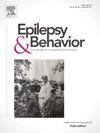基于集成模型的癫痫类型识别决策支持系统
IF 2.3
3区 医学
Q2 BEHAVIORAL SCIENCES
引用次数: 0
摘要
本研究旨在利用人工智能模型根据脑电图结果对患者的局灶性(额叶、颞叶、顶叶、枕叶)、多灶性和全身性癫痫活动进行分类。该研究包括在2021年6月至2024年7月期间在阿达纳市培训和研究医院神经病学癫痫综合诊所随访的575名患者。回顾性回顾患者病史,检查结果,癫痫发作特征和脑电图结果,以建立一个全面的数据库。最初,机器学习架构被用于区分全身性癫痫和局灶性癫痫。随后,将EEG结果分为8个亚组,并利用机器学习方法进行分类。采用多层感知机(MLP)、随机森林(Random Forest)和支持向量机(SVM)三种人工智能模型。通过使用SMOTE进行数据增强,进一步改进了数据集。最初的深度学习模型达到了89%的准确率、召回率和F1分数。然后,将Optuna框架引入到模型中进行超参数优化,精度达到96%。相比之下,所提出的MLP、SVM和XGBoost相结合的集成模型准确率最高,达到98%。该研究表明,数据增强和集成人工智能模型可以为医生分类癫痫类型提供强大的决策支持。本文章由计算机程序翻译,如有差异,请以英文原文为准。
Decision support system based on ensemble models in distinguishing epilepsy types
This study aimed to classify patients’ focal (frontal, temporal, parietal, occipital), multifocal, and generalized epileptiform activities based on EEG findings using artificial intelligence models. The study included 575 patients followed in the Neurology Epilepsy Polyclinics of Adana City Training and Research Hospital between June 2021 and July 2024. Patient history, examination findings, seizure characteristics and EEG results were retrospectively reviewed to create a comprehensive database. Initially, machine learning architectures were applied to differentiate generalized and focal epilepsy. Subsequently, EEG findings were categorized into eight subgroups, and machine learning methods were utilized for classification. Three AI models—Multilayer Perceptron (MLP), Random Forest, and Support Vector Machine (SVM)—were employed. The dataset was further improved through data augmentation with SMOTE. The initial deep learning model achieved 89 % accuracy, recall, and F1 scores. Then, Optuna framework was incorporated into model to optimize hyperparameters, thus the accuracy reached 96 %. In comparison, the proposed ensemble model combining MLP, SVM and XGBoost achieved the highest accuracy of 98 %. The study demonstrates that data augmentation and ensemble AI models can provide robust decision support for physicians in classifying epilepsy types.
求助全文
通过发布文献求助,成功后即可免费获取论文全文。
去求助
来源期刊

Epilepsy & Behavior
医学-行为科学
CiteScore
5.40
自引率
15.40%
发文量
385
审稿时长
43 days
期刊介绍:
Epilepsy & Behavior is the fastest-growing international journal uniquely devoted to the rapid dissemination of the most current information available on the behavioral aspects of seizures and epilepsy.
Epilepsy & Behavior presents original peer-reviewed articles based on laboratory and clinical research. Topics are drawn from a variety of fields, including clinical neurology, neurosurgery, neuropsychiatry, neuropsychology, neurophysiology, neuropharmacology, and neuroimaging.
From September 2012 Epilepsy & Behavior stopped accepting Case Reports for publication in the journal. From this date authors who submit to Epilepsy & Behavior will be offered a transfer or asked to resubmit their Case Reports to its new sister journal, Epilepsy & Behavior Case Reports.
 求助内容:
求助内容: 应助结果提醒方式:
应助结果提醒方式:


